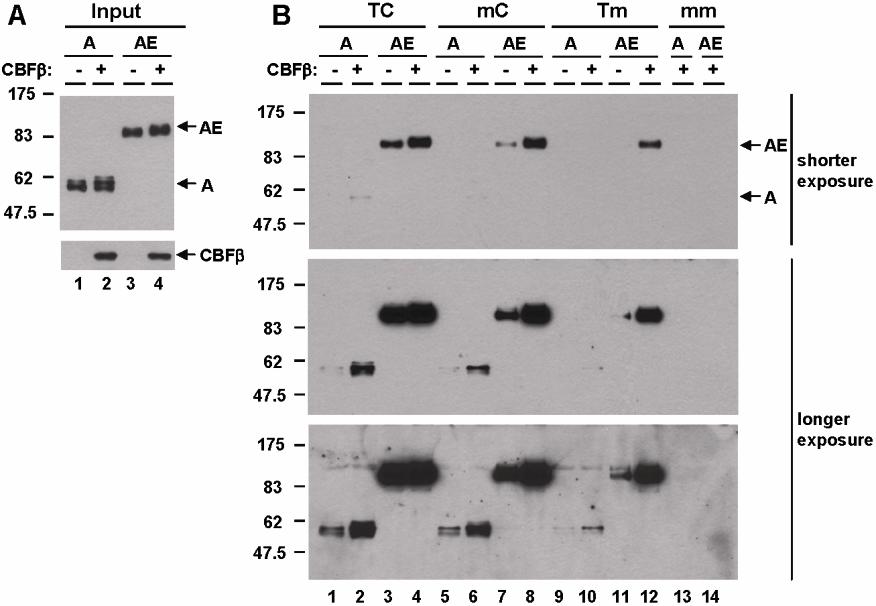Blood, Vol. 112, Issue 4, 1392-1401, August 15, 2008
t(8;21)(q22;q22) fusion proteins preferentially bind to duplicated AML1/RUNX1 DNA-binding sequences to differentially regulate gene expression
Blood Okumura et al. 112: 1392
Supplemental materials for: Okumura et al
Files in this Data Supplement:
- Document 1. Supplemental materials and methods (PDF, 2.35 MB)
- Table S1. Binding DNA sequences of AML1, AML1-ETO, or AML1-ETOtr protein (5′-tcgag … gtcga-3′) (PDF, 4.66 MB)
- Figure S1. DNA binding affinity assay (JPG, 69.6 KB) -
(A) Expression level of AML1 (A) and AML1-ETO (AE) was examined by immunoblotting with anti-HA antibody in nuclear extracts (top). Arrows show the position of AML1 (A) and AML1-ETO (AE), respectively. Expression level of CBFβ was also examined by immunoblotting with anti-CBFβ antibody (bottom). Anti-CBFβ monoclonal antibody is kindly provided by Dr. Nancy A. Speck (Dartmouth Medical School, Hanover, NH, USA). (B) DNA binding affinity assay using wild type and mutant separase probes with nuclear extracts shown in panel A was performed. The protein binding was detected by immunoblotting with anti-HA antibody. Arrows show the position of AML1 (A) and AML1-ETO (AE), respectively.
- Figure S2, DNA affinity purification assay with Kasumi-1 cells was performed (JPG, 37.4 KB) -
Input lanes show the relative expression of endogenous AML1 and AML1-ETO in total cell lysates examined by immunoblotting with anti-AML1 antibodies. The protein binding activity of wild type (TC) or mutant separase probes (mC and Tm) was examined by immunoblotting with anti-AML1 antibody and shown in IP lanes.